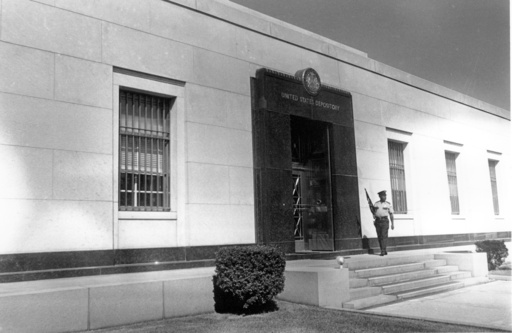LOUISVILLE, Ky. — President Donald Trump recently announced that Elon Musk will be checking on Fort Knox, the iconic facility in Kentucky known for housing the nation’s gold reserves, to ensure the gold remains intact.
Treasury Secretary Scott Bessent added that audits are conducted annually, confirming that “all the gold is present and accounted for.”
The United States Bullion Depository at Fort Knox has safeguarded the nation’s precious metal bullion since 1937, symbolizing high security and protection. In addition to storing gold, Fort Knox serves as the U.S. Army’s human resources headquarters and is the venue for the Army’s largest training event every summer.
**The History and Location of Fort Knox**
Located approximately 35 miles south of Louisville, the Army base spans 109,000 acres across three counties: Bullitt, Hardin, and Mead. Originally established as Camp Knox during World War I, it functioned as an artillery training center. In 1932, it became a permanent installation known as Fort Knox, receiving its first gold shipment in 1937, which was guarded by the 1st Cavalry Regiment.
With the onset of World War II in Europe, the Army developed the Armored Force at Fort Knox, leading to the training of thousands of soldiers in tank warfare. For nearly eight decades, the post was celebrated as the “Home of Cavalry and Armor.” In 2005, however, the Army relocated the Armor Center to Fort Benning, Georgia, establishing the Human Resource Command Center of Excellence at Fort Knox. Moreover, in 2013, the ROTC Cadet Summer Training program was consolidated at this location, which continues to host significant annual training events.
**Current Gold Reserves at Fort Knox**
As reported by the U.S. Mint, the Bullion Depository holds 147.3 million ounces of gold, accounting for about half of the Treasury’s total gold reserves. As for the transfer of gold, the Mint indicates that only small amounts have been removed for purity testing during routine audits, and aside from these samples, there have been no gold transactions for years. The gold is valued at $42.22 per ounce on the books.
**Security Measures at Fort Knox**
The security at the depository is extraordinary, with only a select few privy to the details regarding the structure and contents of the facility. Furthermore, no single individual has the complete procedures necessary to unlock the vault. What is publicly known is that the facility, constructed in 1936, utilized 16,000 cubic feet of granite, 4,200 cubic yards of concrete, 750 tons of reinforcing steel, and 670 tons of structural steel. The site is heavily monitored, and there have only been three exceptions to its strict visitor policy.
**Access to Gold Reserves**
The depository’s vaults were first opened to a select group of journalists and congressional members in 1974, a response to ongoing rumors concerning the removal of gold reserves. Before this event, President Franklin D. Roosevelt was the only individual outside authorized personnel allowed access to the vaults. More recently, in 2017, Treasury Secretary Steve Mnuchin, along with Kentucky Governor Matt Bevin and congressional representatives, toured the facility. Current Treasury Secretary Scott Bessent has expressed his willingness to organize a visit for any senator keen on witnessing the vaults.
**Fort Knox in Popular Culture**
Fort Knox’s gold depository has become a symbol of invulnerability, earning a prominent spot in popular culture. As early as 1952, it was featured in a Looney Tunes cartoon with characters Bugs Bunny and Yosemite Sam searching for gold at Fort Knox. Additionally, the facility has played a crucial role in films, including the iconic 1964 James Bond movie “Goldfinger” and the 1981 comedy “Stripes,” which was filmed partially on the Army base.




